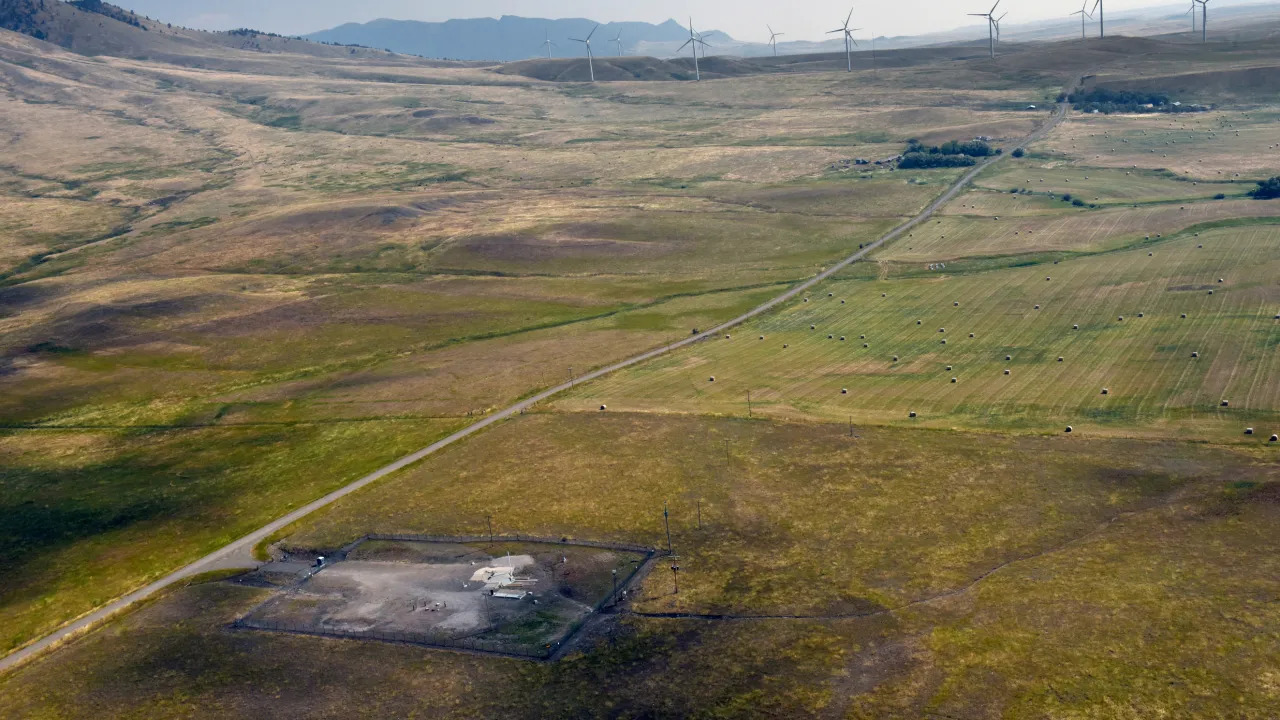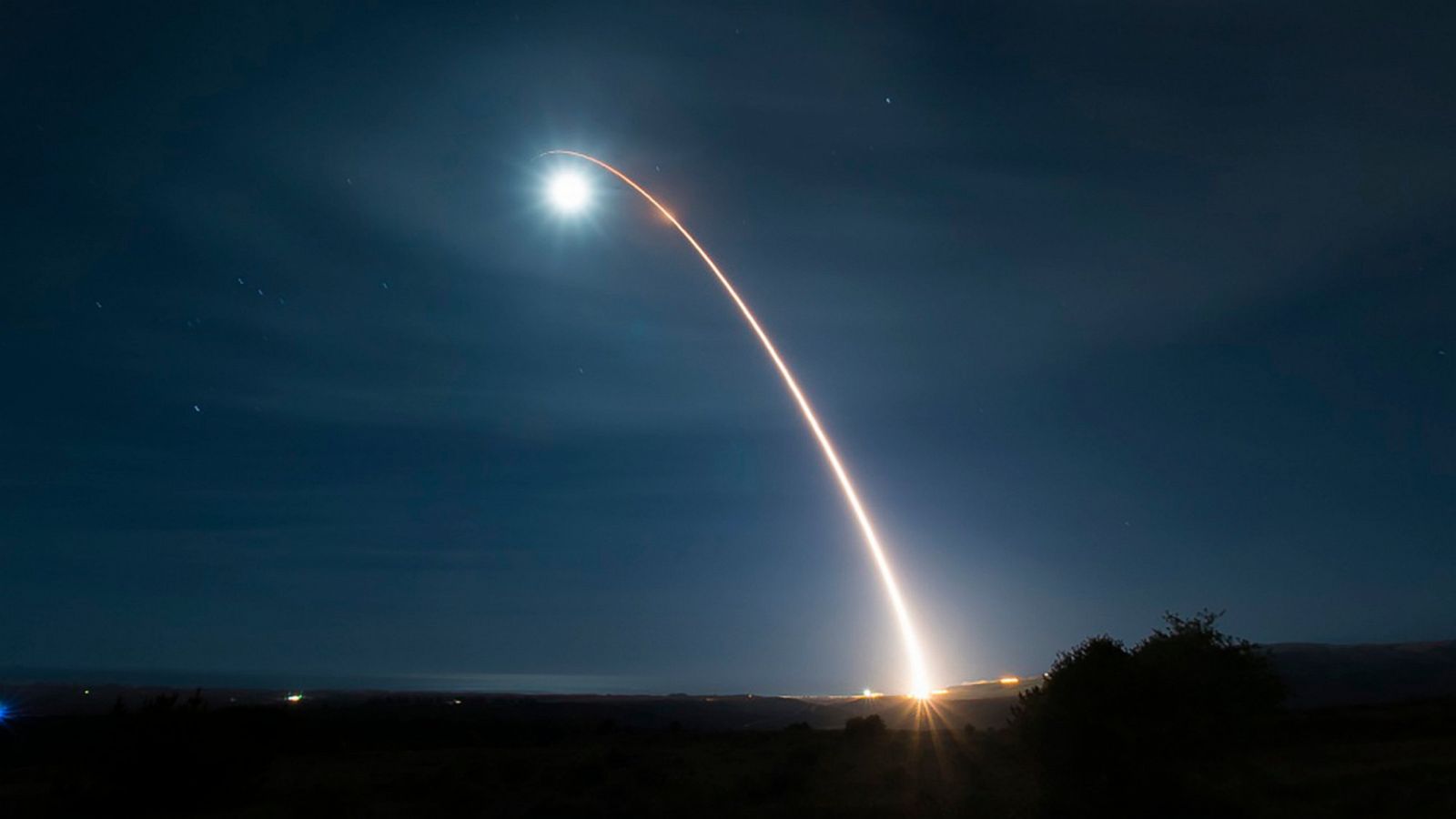The US Air Force’s underground nuclear missile silos that hold intercontinental ballistic missiles (ICBM) are facing another problem — large wind turbines. This trouble is apart from technical malfunctions and opposition from experts.
Ukraine’s Honeymoon With US Over! West Tired Of Zelensky’s Repeated Demand For Money & Weapons?
The gigantic propellers cause turbulence for helicopters operating from the silos’ bases, besides being massive obstacles for the aircraft to fly around.
There are 450 underground silos in Nebraska, Colorado, North Dakota, Montana and Wyoming. Of these, 46 are “severely” infringed upon, which the USAF says blocks more than half of the routes to the launch sites.
Representations to Congress, energy companies, and farmers’ bodies yield little results, given the agricultural, economic, food security, energy saving, and environmental concerns intertwined with the renewable wind energy business.
The USAF appears to be aware of these factors, and reports suggest they are continuing low-key efforts and finding midways between national security and ecological constraints. The rising population and increasing energy needs are tipping the scales in favor of wind turbines, obstructing helicopter flights servicing the launch sites.
Wind Turbines Block Nuclear Missile Servicing Helicopters
A report in the Federal Times sarcastically noted that the USAF is asking Congress to help with the “unexpected danger” of the towering and increasing number of wind turbines, which are “edging closer to the sites each year.”

Privately owned farmlands, underground silos, and the turbines share the same space, where the military installations are nearly “undetectable,” being just small rectangular plots of land “marked by antennae, a chain-link fence and 110,000-ton concrete silo blast door.” On the other hand, the turbines are hundreds of feet high, with blades more giant than the 18-wheeler flatbed trucks that transport them.
Some modern turbines are mounted on towers as tall as 650 feet (200 meters), “which is twice the height of the Statue of Liberty,” USAF Maj. Gen. Michael Lutton said earlier this year.
Some rotor diameters, the width of the circle swept by the rotating blades, can be as much as 367 feet (112 meters). This makes it hazardous for military helicopters like the UH-1 Huey, which must fly low and fast during exercises or when an alarm goes off at one of the sites.
“When you think about a wind turbine, and even fields of wind turbines, they’ll stretch for miles,” said Staff Sgt. Chase Rose. Rose is a UH-1 Huey flight engineer at Malmstrom Air Force Base in Montana.
“They’re monstrous, and then you also have gigantic blades spinning on them. Not only is that a physical obstacle, but those turbines create turbulence that can be dangerous to fly into.”
Energy Saving Vs. National Security
The report notes that the military and the government must also consider rising population and environmental concerns, where alternative non-fossil energy sources contribute significantly to meeting the gap. Farmers and landowners find supplementary income by leasing the land to the military and wind power companies.
The USAF thus found a midway by asking Congress to create a 2-nautical-mile (3.7 kilometer) “buffer zone around each site.” While wind energy firms back the USAF’s idea, they also warn against the “one-size-fits-all” policy. Instead, they advocate a case-by-case approach that considers each site’s unique military, ecological, and energy dynamics.
“But the service acknowledges the difficult position it is in. The farmers who have allowed it to use their lands for decades benefit from the income, and the service does not want to appear to push back on energy alternatives,” the Federal Times report added.
The Air Force continues to “support renewable energy efforts to include wind turbines, and we continue to work with energy industry partners to ensure the country’s green energy needs are met,” said Air Force Maj. Victoria Hight.
Hight is a spokeswoman for F.E. Warren Air Force Base in Wyoming. However, she said, “The encroaching turbines limit safe helicopter transit and nuclear security operations.”
Minuteman Failure
The issue also comes in the larger backdrop of the spotlight of nuclear policy in the US. This is beginning with the failure of the Minuteman missile launch earlier this month and opposition from nuclear experts and strategists to the multi-billion dollar Sentinel Ground-Based Strategic Deterrent (GBSD) program.

They say it is wasteful since the present US nuclear strike capabilities are more than adequate to meet rising threats from Russia and China.
An unarmed LGM-30G Minuteman III was terminated mid-flight during a test launch from Vandenberg Space Force Base, California, due to an “anomaly” on November 1.
First deployed in 1970, the Minuteman has a range of over 6,000 miles (9656 kilometers) and can travel about 15,000 miles per hour (24,140 kilometers).
The USAF conducts roughly four Minuteman ICBM tests annually, of which 400 are carried out from the US Air Force bases in Wyoming, Montana, and North Dakota. They form a vital part of the US military’s arsenal, making up one leg of the US nuclear deterrent triad.
While the reasons are unknown, experts speculate it could be anything from a non-standard trajectory to new equipment that the USAF could be trying.
‘US Doesn’t Need ICBMs To Strike Or Retaliate To Russian Or Chinese Nuclear Attack’
However, nuclear strategists have suggested that the US’s stealthy and qualitatively superior ballistic missile nuclear submarines and stealth bombers like the B-2 Spirit have enough first or retaliatory strike potential. It makes the US arsenal survivable to any Russian or Chinese nuclear strike aimed at destroying its nuclear weapons.
Writing in Foreign Affairs, Charles L. Glaser, James Action, and Steve Fetter point out that the US nuclear force already “contains a huge amount of survivable destructive potential.”
“Each United States’ 14 Ohio-class submarines carries 20 ballistic missiles, each carrying up to eight warheads, yielding 90 to 455 kilotons. A typical submarine carrying an average of 90 warheads can inflict the damage required for assured destruction.”
The US Navy usually has between eight and ten ballistic missile submarines at sea, not to mention the 66 bombers available for nuclear missions. Around 70% of the US’s nuclear weapons are on these submarines and stealth bombers. The rest are in the continental US, in nuclear missile silos, such as the ones that release the Minuteman III ICBM.
An adversary must fire several hundred missiles to target all the ground-based ICBMs. This would still leave unharmed the bombers deployed in various bases in Europe in Bomber Task Force (BTF) missions and the nuclear-powered and Trident missile-armed SSBN submarines, some of which are always on patrol.
They would easily be in a position to carry out a retaliatory launch. “Given these capabilities, under an infrastructure-targeting doctrine, the United States would simultaneously meet the requirements for deterring Russia and China. (An) expansion of its nuclear force would (therefore not) be necessary,” the article said.
Matt Korda, a senior research fellow from the Nuclear Information Project from the Federation of American Scientists (FAS), was also quoted in an article in Newsweek, saying, “The failure wouldn’t necessarily have a bearing on the program as a whole or the viability of the ICBM force.”
Korda added that most nuclear warheads are mounted on Trident II D5 SLBM, which are “so very reliable, so US deterrence is safe.”
- The author can be reached at satamp@gmail.com
- Follow EurAsian Times on Google News




